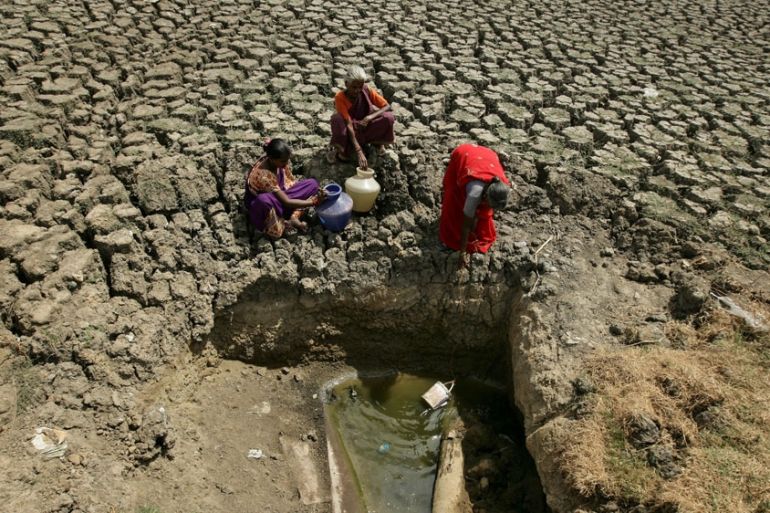As drought hits crops, India PM calls for water conservation push
Modi’s call comes amid concerns that a weak monsoon could push millions to the edge and hammer agricultural production.

Indian Prime Minister Narendra Modi has pushed for greater grassroots water conservation efforts amid concerns that weak monsoon rains could push millions of drought-hit people to the edge and hammer agricultural production in Asia’s third-biggest economy.
The monsoon season is responsible for around 70 percent of India‘s annual rainfall and is particularly important for the farm sector since more than half of the country’s arable land is rain-fed.
Keep reading
list of 4 itemsIndia Lok Sabha election 2024 Phase 4: Who votes and what’s at stake?
Should India take from the rich, give the poor? A new election flashpoint
India Lok Sabha election 2024 Phase 3: Who votes and what’s at stake?
“Only 8 percent of all the rainwater in India is conserved,” Modi said in his first monthly radio broadcast after winning re-election last month. “It’s now time to solve this problem.”
At least 21 cities are predicted to run out of groundwater by 2020, according to a report released by the Indian government’s think tank, NITI Aayog, last year.
India received 24 percent less rainfall than the 50-year average in the week ending on June 26, data from the India Meteorological Department showed, with scant rains over central and western regions of the country.
The spectre of a crisis this year comes after drought in some parts of India in 2018 destroyed crops, ravaged livestock and exhausted reservoirs, leaving some cities and industries with little water.
“There is no one formula to deal with the water crisis across the country,” Modi said, adding that he had written to scores of village chiefs across the country about the need to conserve water earlier this month.
The prime minister said there was a need to create public awareness about water conservation and explore traditional water management methods, in much the same way as a “Clean India” mission to end open defecation, started in 2014, had.
However, Modi did not outline any specific measures his government would take to deal with the ongoing situation, which has already affected the sowing of summer crops and forced many communities to buy water from expensive private tankers.
Himanshu Thakkar, co-ordinator of the South Asia Network on Dams, Rivers and People (SANDRP), said Modi’s initiative would have limited impact unless the government fixed problems like rampant groundwater usage.
A key source of water, groundwater levels in 52 percent of wells monitored nationwide were lower in 2018 compared with last decade’s average, India’s water resources minister Gajendra Singh Shekhawat told parliament this week.
“The government is doing nothing to regulate groundwater use,” said Thakkar of SANDRP, a non-governmental organisation that advocates for better water management practices.
“It has all the knowledge and institutions, but it is doing nothing.”